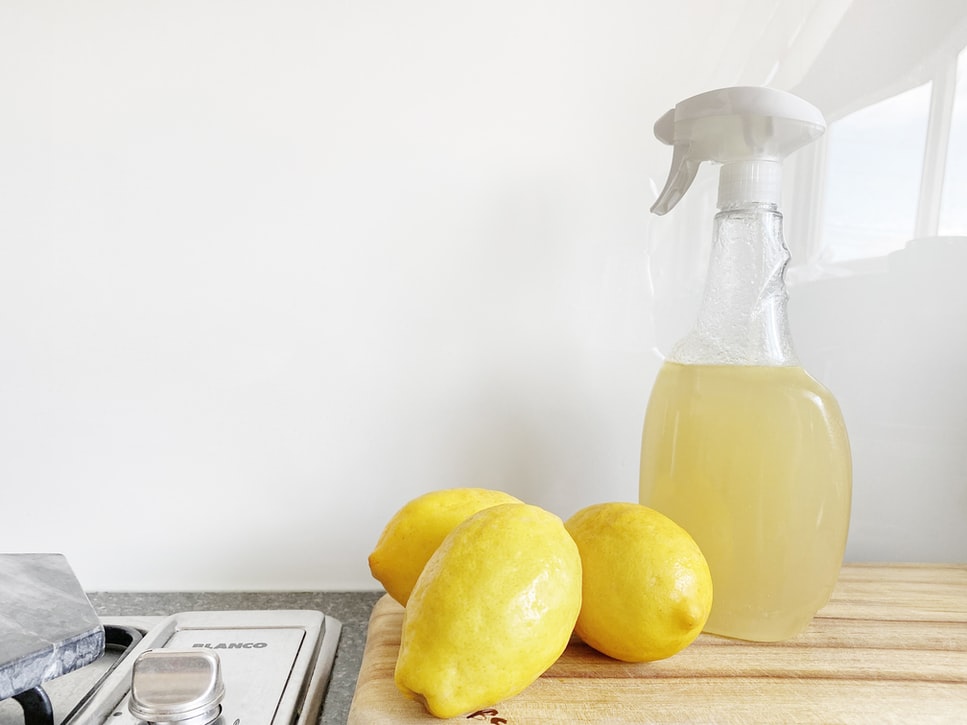How to Make your Cleaning ‘Green’

There’s nothing like a spot of spring cleaning to freshen up the home and the mind!

Photos By: Stock Images
In fact, several studies have connected cleaning with positive outcomes for mental and emotional wellbeing, helping us regain a sense of control over our environments and alleviating stress. However, as we grow increasingly planet-conscious, we may want to think about how everyday activities like these can exacerbate the effects of climate change, and what we can do to prevent this. By chucking out those old bits and pieces lurking in our cupboards, we may be unwittingly filling landfills and contributing to greenhouse gas emissions. Similarly, the chemicals we use to wipe down grubby surfaces might be polluting water supplies. This is hardly the soul-cleansing kind of spring clean we’re after — so to keep our consciences as clear as our closets, we’ve compiled this handy list of five tips to make cleaning as “green” as can be. Let’s jump in.
1. Donate what you can
One way to cut down on waste is to donate used goods to friends, family, and charity. As the age-old adage goes: one man’s trash is another man’s treasure. If you have old clothes, tech and furniture that you no longer need, there may well be people in your life that can take them off of your hands.
If you’ve got a lot to give away, car boot sales and other fundraisers offer more great opportunities to declutter. By donating everything that you can bear to part ways with, you can create space at home and feel all the fresher for it, while continuing the life cycle of your old possessions. By breaking the chain of ownership and disposal, you’ll stop unnecessary waste from going to landfill.
2. Recycle what you can’t donate
For the goods that are looking a little worse for wear and can’t be donated, why not recycle? This form of household waste is known as dry mixed recycling (DMR) which waste management experts Bywaters describe as materials such as cardboard, glass and plastic that are “baled and ready to be recycled into new products like glass bottles, plastic toys, and paper”. By sending these materials on to be used in the production of new goods, you prevent them from going to landfill, making this the more sustainable solution for your cleanout.
What’s more, recycling reduces the need for new materials to be produced to meet manufacturing demands. Material production contributes to over half of industrial emissions, so we must continue to recycle whatever we can to lower the carbon footprints of these industries we support.

3. Use reusable tools
We’ve all heard about efforts to reduce our consumption of single-use goods, such as coffee cups and straws — and this principle can be applied to our cleaning products too. Investing in reusable tools like washable cloths, sponges and gloves is an easy and affordable way to reduce your cleaning waste.
Sustainable cleaning companies like Biolindo and LoofCo stock a range of kitchen, dishwasher, laundry and bathroom products that can help you minimise your waste, such as biodegradable cloths and plastic-alternative bamboo brushes. In the long run, options like these can save you from constantly throwing out and replacing your cleaning tools. This cuts down your carbon footprint twofold, by both reducing your plastic use and the amount of waste you send to landfill. While reusable products might take that little bit more investment and maintenance to keep in good shape, they tend to ultimately be the more affordable option, as you won’t have to keep adding the likes of surface wipes and latex gloves to your shopping list.
4. Make your own cleaning products
This one might seem scary at first, but it’s actually quite common. For years now, many people have chosen to DIY their own cleaning products using everyday ingredients. This is an easy alternative to purchasing the innumerable plastic-bottled sprays and colourful cleansing agents that are advertised for every different surface of the house.
By making your own products, you can reduce your single-use plastic consumption and know for sure that the mixtures you’re using won’t unleash any harmful toxic chemicals upon the environment. For example, a simple and non-toxic surface cleaner can be made using white vinegar, water and lemon juice, while scrub solutions for pots, pans and sinks can be made by combining a little baking soda with water and non-toxic soap.

5. Ditch the aerosols
Lots of our everyday cleaning agents come in aerosol bottles, not just the kind we use under our arms: products like furniture polish, air fresheners and degreasers all come in these handy cans. And convenient as they may well be, global aerosol use is now said to release more harmful chemicals into our atmosphere than the combined output of every vehicle in the UK. This is thanks to the volatile organic compounds that are used to store products in cans but are released when we use them, going on to deplete the planet’s protective ozone layer.
Unfortunately, this makes our constant spraying pretty unsustainable. To reduce aerosol use and encourage manufacturers to switch to alternatives, we can ditch the cans altogether. There are plenty of aerosol-free substitutes for our favourite products, such as eco-friendly air freshening pouches, oil warmers and reed diffusers.
Hopefully, this list of tips has given you enough inspiration to go for a sort-out of your clutter and cleaning regime. We can’t save the world overnight, but making small changes to our everyday routines is a good place to start — and going green when we clean is an easy one.






